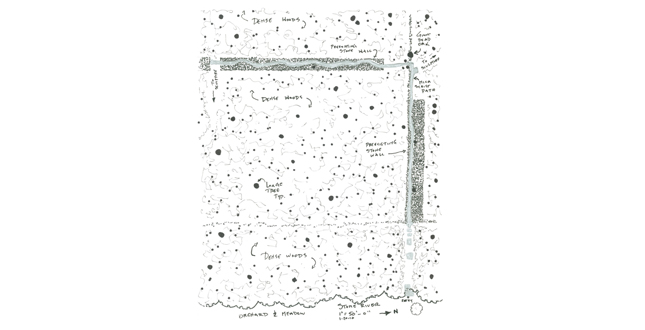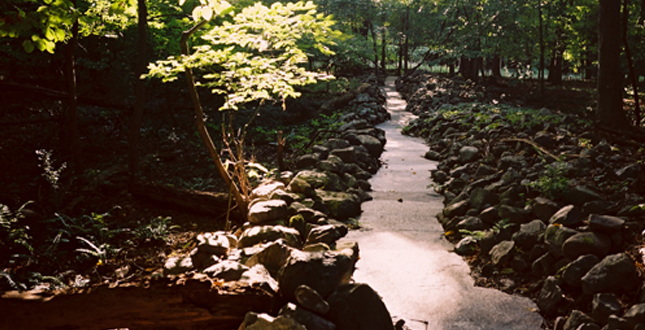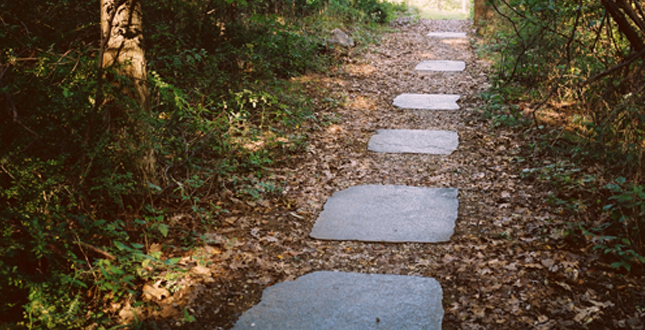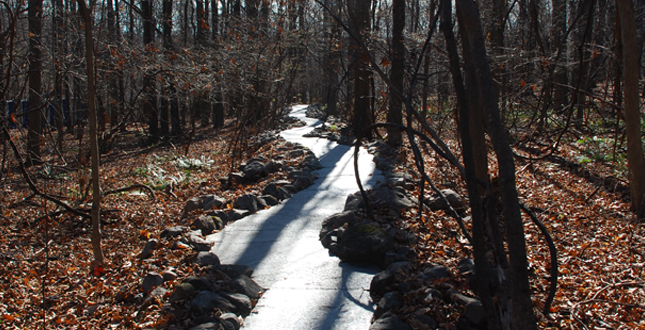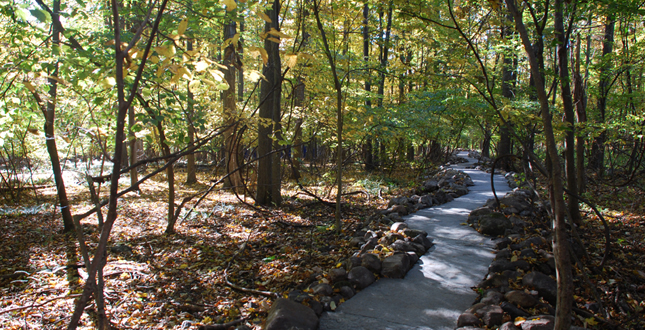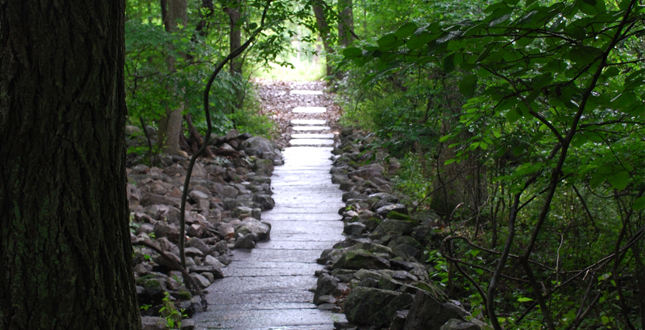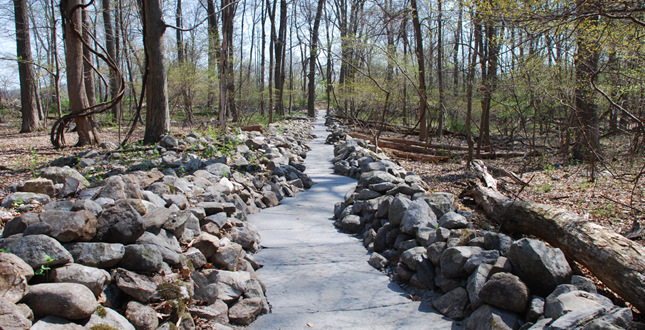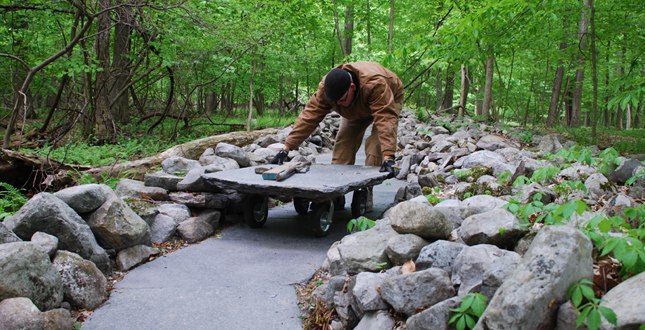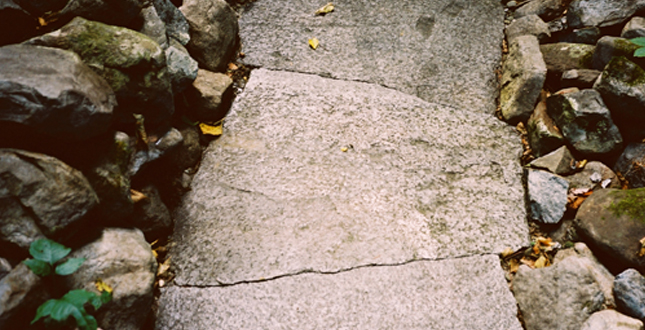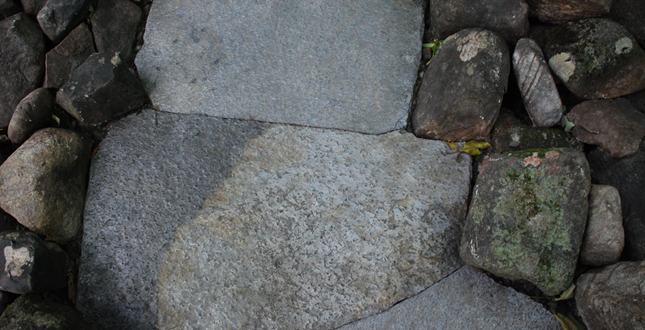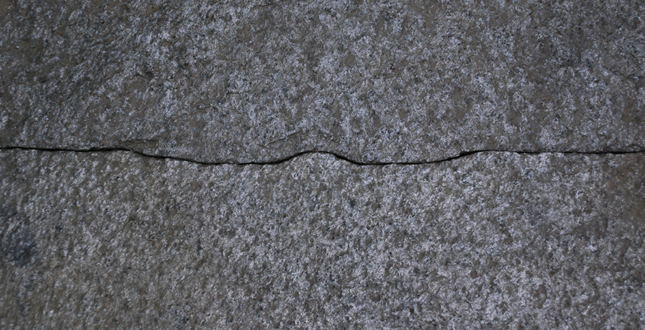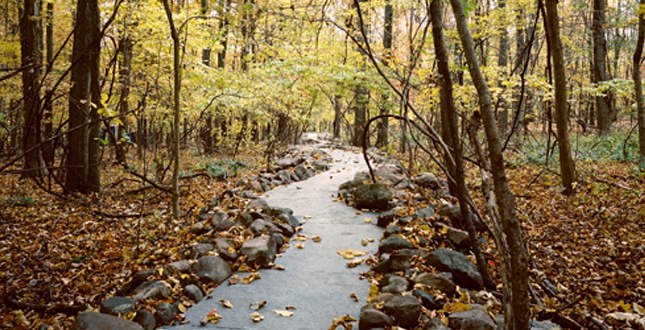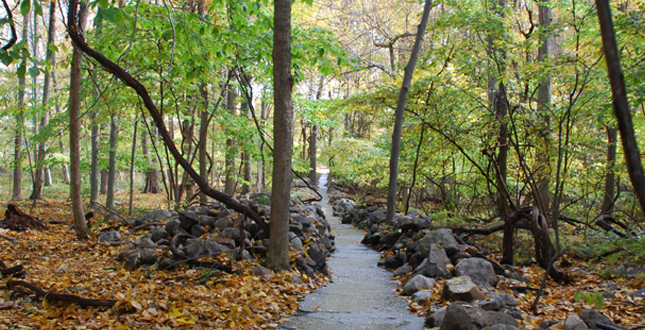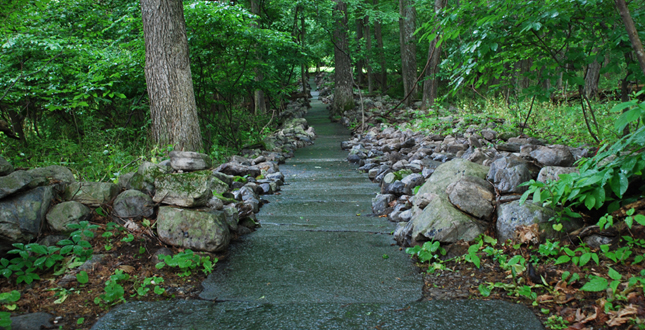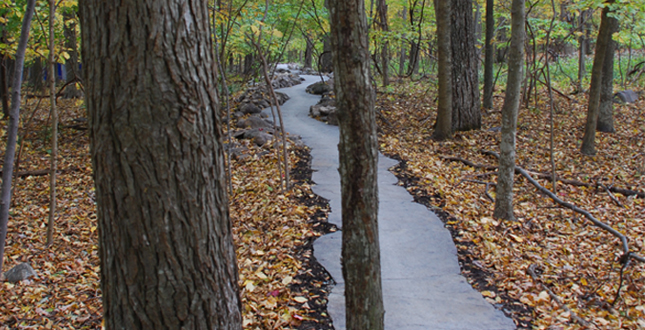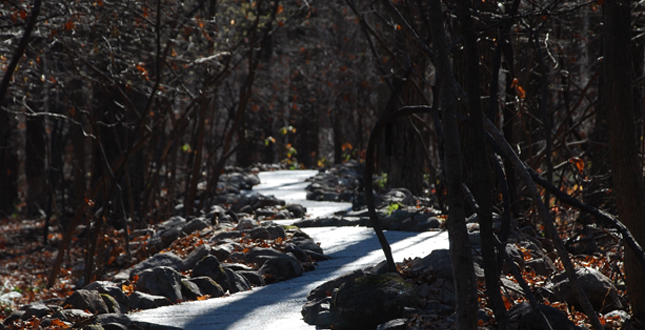Honor Award
Stone River
Eastern New York State
Jon Piasecki, ASLA, Housatonic, MA
Project Statement
In this project I built a path in which I applied great effort to join stones together. I joined the path itself to the preexisting stonewall and woods in an attempt to offer the visitor the opportunity to experience a sense of fusion with nature. The goal of this project is to join culture to nature. This path provides one trajectory along which people can reintegrate with the natural world around them.
Project Narrative
—2011 Professional Awards Jury
This project is designed and built as a piece of landscape art.
The design was essentially a flash of inspiration during a site visit informed by several years of practice physically joining stone and working in the woods as well as by my independent research on Incan stone work. With this path I applied great effort to join stones together. I strove to join the path itself to the preexisting stonewall and woods in an attempt to offer the visitor the opportunity to experience a sense of fusion with nature. The goal of this project is to join culture to nature. This path provides one trajectory along which people can reintegrate with the world around them in a sustainable way.
I built this project by myself. There were no other laborers. I hammered each stone joint and moved each stone down the path on a small wooden cart. I transferred tens of tons of gravel and sand as a setting bed with a wheelbarrow and I moved nearly 400 tons of stone in the wall and as paving over the 800-foot length of the path. I opened the existing stonewall, chose the course of the path within it and rejoined the residual wall stone in such a way that the path appears to have grown organically within this stonewall where it resides. I was able to personally lay stones so as to avoid individual clumps of ferns, standing trees, fallen logs and existing stones with mossy growths in the wall. This was done in an attempt to preserve as much as of the preexisting life of the enormous wall as possible.
The general design context of this project is of the highest order of cultural production in the fields of landscape architecture, outdoor sculpture and architecture. The challenge in all participating fields is to do the best work possible. The project presented here is my part of this great project and is one piece of many pieces within the larger overall vision of the clients and of another landscape architect. I have designed and built the path presented here, which leads to two sculptures by different artists. However, my path is explicitly acknowledged to be its own sculptural work.
Machines with internal combustion engines played a part in this project. They were used in the quarrying of the silver stone (a mica schist) its transport, commuting to the job site, some rough stone cutting and to a limited extent in shuttling of stone, sand and gravel. A good deal of this mechanized work was carried out using vegetable based bio-diesel fuel. The vast majority of the project was made using simple machines without engines and with the efforts of my body.
This project is an illustration of the labor of one person inspired to change the world. In this instance by joining stone and by making a path into the woods with great sensitivity, I am working to heal, in a small way, the rift between culture and nature that is intrinsic to our modern relationship to the land.
Today, design and fabrication are generally distinct entities. Labor is devalued. Unknown people toil to make our things. Machines spew out the stuff of our needs and desires and the making of them dehumanizes the production class and despoils the land. Of course the machines are essential, and some disconnect between design and fabrication is inevitable, but this project openly asks if perhaps our fascination with the virtual over the actual, or with design over build, has gone too far? I would suggest that it has and that this disconnect certainly harms nature but it endangers our humanity even more so.
The goal of this project is to integrate the visitor with nature as he or she walks along this path through the woods. I hope to help these visitors feel the life and wonder of the natural world of which we all are a part.
Project Resources
Michael Van Valkenburgh is the landscape architect for the larger project of which my smaller portion (Stone River) is here entered in your competition. He offered generous assistance by initially considering me for the job and he offered helpful critique of my project at several stages.
Robert Davis helped with coordination of deliveries and was very supportive.







